Imaginary review by Dan Geddes
Works
Picasso Blockhead
Piece of Shit #2
Rhubarb Pie Gramophone
Straight Red Line On Paper
Nixon’s Mind
“Genuine Forgeries”
Final Days: Hair Piece
Kinski’s Legacy
WASHINGTON, DC—The most comprehensive exhibit ever of the work of “Arbitrary Expressionist” Karl Kinski (1900-75) opened at the Warner Gallery in Washington last Saturday to interminable lines. Some of Kinski’s most famous paintings, including Picasso Blockhead (1923), Straight Red Line On Paper (1934), Nixon’s Mind (1974), and the surrealist film Rhubarb Pie Gramophone (1931), were all on display for appreciative art-lovers.
One hundred tickets were given away on a first-come first-serve basis at 8:00 a.m. Saturday morning, but most of these found their way into the hands of venerable members of Washington’s panhandler community, who were later seen selling them for more than $200 each to art-hungry fans.
Those lucky enough to gain admittance were privileged to view works spanning Kinski’s fifty year career, from Picasso Blockhead (1923) (painted before Kinski had changed him name from his birth name, Jonathan Berkeley) to Hair Piece (1975), executed on his very deathbed.
Kinski never fathered his own school of art, but was an artist highly susceptible to artistic fashions, and so his oeuvre parallels many developments in twentieth century art, including Cubism, Dadaism, Surrealism, and Abstract Expressionism. Kinski himself later maintained he was always an “Arbitrary Expressionist” regardless of what he painted. But the great German critic Jan Kreustadt simply called him “The Anti-Artist, the assassin of all that is sublime.”
Picasso Blockhead
Exhibiting Picasso Blockhead (1923) alone is a triumph and minor miracle for Warner curator Frank Ballston, as the painting has only been exhibited once before. Although to the untrained eye Picasso Blockhead appears to be a mere repetitious box pattern surrounding a crude figure who can only be identified as Picasso because of the painting’s title, many art critics see the repetitious box patterns as precursors to Andy Warhol’s Campbell Soup Cans or Marilyn. Kinski’s work deconstructs the supposed originality of Picasso’s cubism by surrounding him with mass-produced boxes. Picasso was not amused, and bought the painting anonymously and locked it away, as was learned only upon his death and cataloging of his private collection.
Piece of Shit #2
Kinski quickly moved out of his Cubist period, and embraced Dada, especially as practiced by Marcel Duchamp, master of “ready-made” works of art. Kinski was equally intrigued by this playfulness about the boundaries of art. He soon created his own infamous Piece of Shit #2, a fecal sample of his very own issue, which he instructed gallery personnel to carefully preserve in transparent paraffin wax. Piece of Shit #2 caused quite a stir during its premiere exhibit at the Hirschire Gallery in Greenwich Village in December, 1927, but has been little seen since. With Piece of Shit #2—now presented at the Warner in an hermetically sealed plastic box—Kinski out-Duchamps Duchamp himself as the champion of ready-made art. As Kinski himself reputedly said at the premiere: “I don’t know how I do it, I just do it.”
As strong as a statement as Kinski was able to make as a ready-made artist, it is encouraging to see him grow as an artist and embrace surrealism. According to the critic Roger Fry, who will forever be immortalized for coining the term “post-Impressionism” for the period following the Impressionist period, Kinski’s surrealism was an advance on Dadaism, in that:
Kinski’s meaningless art was now channeled toward the pro-active telos of achieving meaninglessness, whereas in his Dadaist stage his art failed to strive for meaninglessness, even if it achieved meaninglessness inadvertently.
Rhubarb Pie Gramophone
The Warner exhibit even includes a small theater for watching Kinski’s 1931 surrealist film Rhubarb Pie Gramophone. Borrowing heavily from Bunuel’s and Dali’s surrealist masterpiece Un Chien Andalou (1929), Rhubarb Pie Gramophone, despite its lack of sets, script, or actors, was the most expensive American “art film” of its generation. Kinski, who received major backing from Wall Street financiers just before the crash of ’29, shot some 45 hours of footage (later reduced to a running time of 5 hours), much of it in his own apartment. Most of the scenes involve the destruction or discoloration of items of Kinski’s personal property. Kinski himself appears in nearly every scene in Rhubarb Pie Gramophone, mainly performing such bizarre antics as pouring a can of paint over a roast beef, wearing a T-shirt that reads The System while sodomizing his girlfriend (a scene he later claimed was a feminist statement on the oppression of women), or reading passages of King Lear aloud while a flock of ducks quack in his living room.
The film features a dizzying speed of cuts, and we are shown different images about every five seconds for five solid hours. Kinski once claimed to have dedicated a year of life to editing the film, though Phil Betcher, Kinski’s confidante late in life, claimed Kinski once told him he did it in a week.
The title refers to the one recurring image, that of a pie spinning around on a gramophone. As the film progresses we see shots of Kinski trying to cut a piece of the pie as it spins, and butchering it hopelessly, scattering pie filling through the room. This shot is relentlessly repeated as if it might unlock the key of meaning of Rhubarb Pie Gramophone.—and many critics have hazarded theories—but in the end, Kinski’s film must be taken as his manifesto for the “arbitrary expressionism” that was his answer to surrealism.
It certainly provoked the surrealists. Surrealists such as Bunuel and Dali, and the semi-retired Duchamp attacked Kinski variously for copying their work, diluting the Surrealist cause, and simply for being a bad artist. Kinski usually averred that he was the original, and that other surrealist artists stole his ideas, though most art historians do not endorse Kinski’s view.
Although, originally released as a five hour film, the Warner’s curators are showing only a fifteen minute selection from Rhubarb Pie Gramophone, taken at random.
Straight Red Line On Paper

Straight Red Line On Paper (1934) , Dan Loathitz Collection, The Art Institute of Weehawken.
Kinski was always ready to adapt to the latest trends, and his Straight Red Line On Paper (1934) shows his early adoption of minimalist techniques. Kinski described his artistic strategy:
…from the first the viewer finds himself transfixed by the red line. It is, indeed, very red, especially in contrast to the stark white canvas. Red, and then…White. Much is explained by this. The clash of opposites: perhaps reminding us of the struggle of the Red and White Russians during the Russian Civil War. Or the War of the Roses in Henry VII’s time.
Even without recourse to history, one is struck by my audacity in presenting a canvas that makes no claims of representing mere objects in nature or reality. Instead, we are presented with an idea—the idea of red, and of white. And the line, the red line, is not so much a mere line, as it is a “zip” into our consciousness. We are struck by the red line, much as we are struck by our first meeting with a new person. In that first instant we know more about people, on an intuitive level, than we ever will. Later we will be told their lies, their own version of themselves, and we shall never see them so clearly again. It is the same with my “zip”; we are presented with red in starkest, truest form, before it will begin to lie to us, as red always does….
Nixon’s Mind
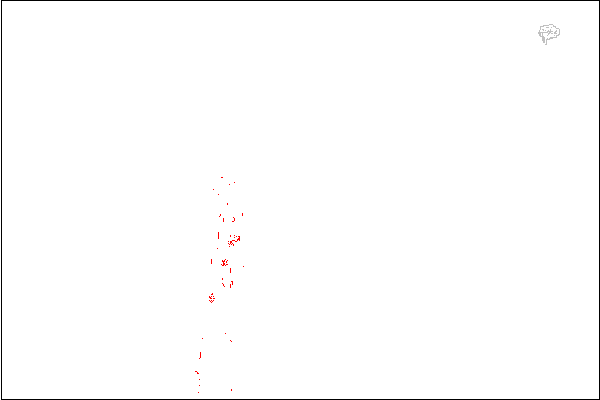
Nixon’s Mind (1974), Courtesy of the Dan Lothowitz Colection.
Although Kinski had a very successful run from the 1923 through 1934, the onset of the Great Depression lessened the demand for his experimental art in America. He continued to produce paintings in many different modes, trying the “action paintings” of Jackson Pollack (though Kinski modified Pollack’s process by applying paint with a customized slingshot) and many other styles. But Kinski wasn’t to achieve another success for forty years, when his “Oblique” series of painting exhibited in Greenwich Village in 1974.
Nixon’s Mind (1974), an enormous if totally blank canvas to the naked eye, wasn’t intended to be the highlight of the “Oblique” Exhibit of 1974. Kinski later admitted it took him little time in conception and execution. But for exhibit-goers during the climax of the Watergate scandal, the canvas struck a nerve, and a crowd gathered round the massive work The pressing question was whether there was any paint at all on the canvas. Kinski’s caption claimed that “the gray speck in the upper left corner suggests the impotence of the mind when facing the great white universe,” but few could even make out this gray speck.
The painting may have been forgotten had the great critic Jan Kreustadt not pushed his way forward to inspect the canvas, and shouted “This a is blank canvas you idiots!” In an apoplectic rage he hurled his wine glass at the work, leaving four ounces of 1969 Cabernet Sauvignon dripping over the canvas.
Kinski excitedly ran up to his defaced work, and yelled: “It’s Perfect!” After a bidding war, the work sold that night for $500,000, considerably more than the original list price of $2500.
Visitors to the Warner can still see a few red pink spots where the Cabernet Sauvignon once was, though few claim to see the original gray spot of which Kinski wrote.
“Genuine Forgeries”
The success of his Oblique series, and the notoriety of Nixon’s Mind, made Kinski the New York art world’s sensation of 1974, and kindled interest in Kinski’s earlier work. Auction houses were selling works even from his forgotten period of the 1940s, 50s, and 60s for outrageous prices.
This set the stage for Kinski’s role in the “Genuine Forgeries” scandal of early 1975. Art historians are still debating the extent of Kinski’s role in the scandal.
It seems Kinski himself had sold so many of his works during his lean years, that in the brief selling spree after the Nixon’s Mind incident, he was soon nearly out of his own paintings. Although he was selling even dubious works such as Edsel In Oils (1952) for good money, he had quickly adopted an appallingly lavish lifestyle. He had also sunk most of his money in ill-fated investments like General Motors, whose stock was then plummeting in the wake of the OPEC oil embargo.
It was in this context that Kinski became vulnerable to the scheme of a scrofulous character named Phil Betcher, a fledgling painter, who insinuated himself into Kinski’s newly formed entourage. Betcher devised a scheme whereby Kinski would sign his name to Betcher’s works, claim he had executed the works years before, and then sell them to the unwitting auction houses.
Unfortunately, this scheme was not uncovered until after Kinski’s death in November, 1975. Until that time, Betcher painted furiously, sometimes producing as many as three works a day for Kinski’s signature—bleary emulsion painting, oils, watercolors, and even sketches (though Kinski himself was more of a concept artist and not known to have sketched anything). Kinski himself churned out some fast, second-rate work during this time. Kinski often gave them anti-Nixon titles (Adolph Nixon, Dick Head, What’s a Dick For?), even when no human forms were discernible within the work), and they were purchased eagerly by the auction houses, and later by individual collectors.
Thus, we now have some 5000 paintings of Kinski’s, and since his actual signature is on nearly all of them, it is nearly impossible to distinguish the real Kinski’s from the “genuine forgeries” he signed for Betcher. Some Kinski scholars claim the ability to tell Kinski’s work from Betcher’s, but hopelessly confusing matters is that the respected critic Irving Hanneman actually witnessed Kinski executing several Betcher-like paintings, suggesting that Betcher influenced Kinski’s late style. For many, Betcher, who spent years studying at the Sorbonne, was actually a far more technically proficient artist than Kinski, who was self-taught, and a poor draftsman.
Final Days: Hair Piece
Still, throughout 1974-75, Kinski was seen as an elder statesman within the American art scene. But he was diagnosed with terminal cancer in April, 1975, and knew he was running out of time. In his magisterial June, 1975 Playboy interview he summarized his place in American art:
I know what Americans like. Americans like attacks on Richard Nixon, floating clocks [a reference to Dali’s Persistence of Memory, a favorite Kinski/Betcher theme] and the slaughter of innocent children on television. Except for pockets of New York City, America is a very anti-artistic society. By attacking the stale conventions of twentieth century art, I have attempted to give the people what they want.
Kinski remained an artist to the end, and visitors to the Warner Gallery were privileged to see Kinski’s final work of art, Hair Piece, an actual piece of Kinski’s white hair that he yanked out of his head while on his deathbed, and scotch-taped to the wall above the nightstand. Reputedly, he uttered: “Though my corpse will be too wasted to leave it to science, I shall to leave my body to art!” as he stretched to affix the hair to the wall, and then died.
Kinski’s Legacy
Assessing Kinski’s legacy, even some twenty-five years after his death remains problematic. One can now find his works in museums throughout the world, and yet a cloud of uncertainty hangs over his oeuvre. Without running chemical dating tests on the 5000 or so suspect canvasses it is impossible to determine which are truly Kinski’s works. Museum curators and private collectors are understandably chary of such tests, which could only depreciate the paper value of their collections by millions of dollars. And so, while it is difficult to sell Kinski works, the high asking price for the more famous prices still drives up the price of probable Betcher forgeries signed by Kinski.
Yet Kinski’s place in twentieth century American art is assured. Although his forgotten thirty-year “middle period” is of doubtful value, the splashes he made in his early and late careers as a concept artist remain charming and memorable salvos against all that is pretentious in representational art, and even some supposedly revolutionary movements as Cubism.
“Karl Kinski: Arbitrary Expressionist” will next move to Chicago, and then to Seattle, before the pieces are redistributed to the their separate collections. Although it has long been sold out, you may be able to get a daily ticket if you line up at the Warner box office around 5:00 a.m.
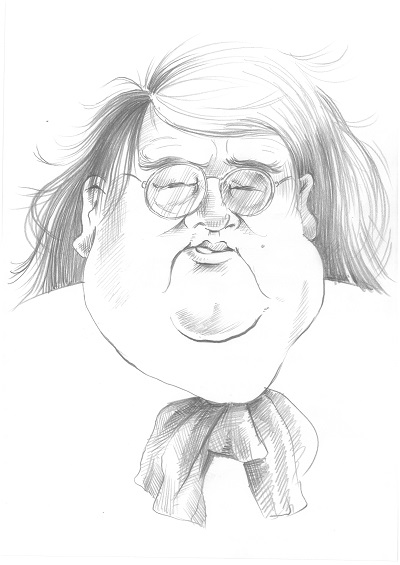

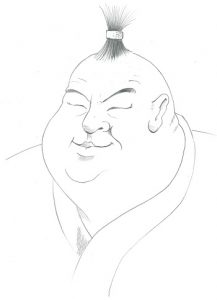
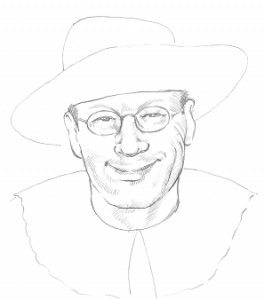
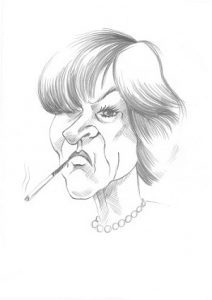
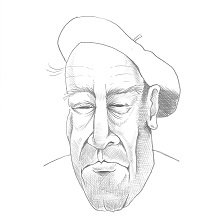

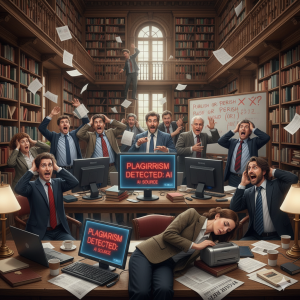
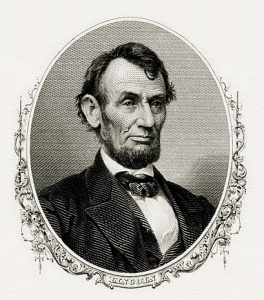


Be First to Comment